

| The Ctenophora, Tanyptera and Dictenidia Craneflies of Nottinghamshire | ||
| Craneflies (Tipulidae)
represent some of the more easily recognised insects, but
they are not always welcomed by people with a fear of
them, as their attraction to artificial light often leads
to them turning up indoors. The pale brown colouration,
long thin body and extraordinarily long legs of the more
familiar Craneflies, means they are rarely offered a
second look, but some species are much more spectacular
in their colouration and markings. Most impressive and spectacular among UK Craneflies, are the genera of Ctenophora, Tanyptera and Dictenidia. These are large species with several occuring in Nottinghamshire. During the Spring and Summer of 2010, we were fortunate enough to come across two of these spectacular insects at Sherwood Forest Country Park in 2010 and that has helped to fuel a developing interest in the area's Diptera. |
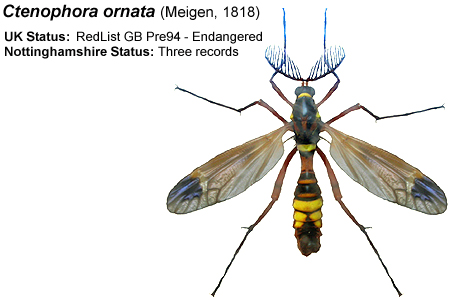 |
|
| .... | ||
| Diptera is a
poorly recorded Order in Nottinghamshire, with Hoverflies
(Syrphidae) receiving the most attention. Historically,
most of the Sherwood Forest NNR's older Diptera records
are credited to L.A. Carr, R.C. Bradley and C.J.
Wainright. Thornley and Saunt, seem to have covered other
Nottinghamshire sites around the turn of the last
century, but little is known of more recent Diptera
recorders. The only recent work on Diptera at Sherwood Forest, are surveys by A. Godfrey at Sherwood Heath in 2003, 2004 and 2006 and more recently at the Sherwood Forest Country Park and Buck Gates area of Thoresby in 2010. We also did some invertebrate assemblage survey work on Budby South Forest in 2010, but have only recently touched on Diptera. The two species we found in 2010 were Tanyptera nigricornis and a few weeks later, Ctenophora pectinicornis. Both were females and were rather reluctant to fly and so easy to photograph and quickly identified on return home. A second Tanyptera nigricornis (this time a male) was also found, but unfortunately not photographed at the time. Both these species are uncommon or rare in Nottinghamshire, but a chance find of a male Ctenophora ornata in July 2009, has subsequently proved to be the most interesting. |
|||||||||||
| .... | |||||||||||
| UK species of Ctenophora, Tanyptera and Dictenidia Craneflies | |||||||||||
| .... | |||||||||||
|
|||||||||||
| .... | |||||||||||
| Ctenophora
ornata (Meigen,
1818) |
| Present
UK Status ... RDB1 and classed as endangered. Ctenophora
ornata is perhaps the most beautifully marked of all
four species known from Sherwood Forest. At one time,
there were just six post-1960 records known nationally,
coming from the New Forest in the 1970's, Windsor Forest
in 1988 (Ref: NBN
Atlas/Natural History Museum) and from the New Forest again in 2008 (Ref: Dipterists Forum, Cranefly
Recording Scheme). The
lack of recent records had suggested a serious
contraction of its former range, but 2013 saw increased
numbers at Windsor, but seemingly, not at other known
localities. Ctenophora ornata is a Cranefly of ancient broadleaved woodland, where it breeds within dead and rotting wood. Beech is the favoured host tree in the UK, but other trees are utilised on the continent and it has been recorded near living ancient Oaks. The three Sherwood Forest records (at Clipstone Old Quarter on 2nd July 2009 (Pendleton, T.A. and Pendleton, D.T.), Clipstone Old Quarter again on 1st August 2013 (Pendleton, T.A. and Pendleton, D.T.) and at Budby South Forest on 4th August 2018 (Wright, S. and Osborne, J.)) would indicate that Oak is the favoured host tree here. |
||
| ... | ||
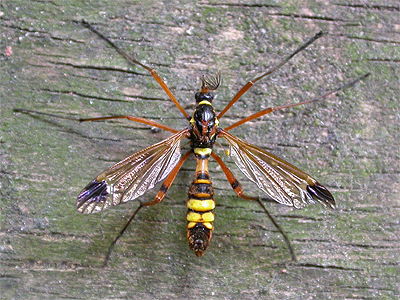 |
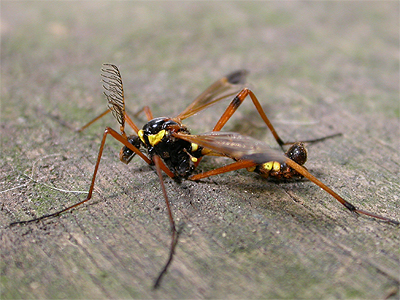 |
|
| ... | ||
| Present Nottinghamshire Status ... Now three Nottinghamshire records, all from the Sherwood Forest area and which represent the most northerly UK records. All three of the county's records concern males that were attracted to MV light traps. Although there is obviously a viable breeding population in Sherwood Forest, the closeness of the first two records had suggested that it was extremely localised, until one was recorded from Budby SF in 2018. | ||
| Ctenophora
pectinicornis (Linnaeus, 1758) |
| Present
UK Status ... Notable. Another widespread,
but local Cranefly, with a similar UK range to D. bimaculata. It favours
old broadleaved woodlands, containing dead or deseased
wood in which the larva develops. There are 30 post-1960
UK sites. Present Nottinghamshire Status ... J. W. Carr lists two historical records by W.G. Blatch (no date) and one by L.A. Carr in 1912. Currently known largely from the Sherwood Forest and Clumber Park areas, with both sites producing several post-2000 records. It is however, the county's most regularly recorded of the four species. |
||
| ... | ||
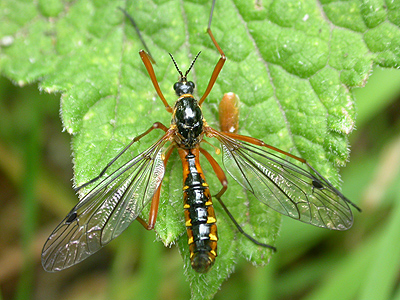 |
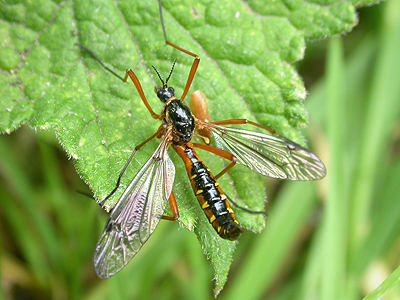 |
|
| ... | ||
| The most recent records of this large and spectacularly marked Cranefly came from the Sherwood Forest CP in mid-June 2010 (Pendleton, T.A. and Pendleton, D.T.) and from the Buck Gates area of the NNR (Godfrey, A.). Away from Sherwood Forest and Clumber Park, C. pectinicornis seems to be decidedly rare, but there is a single record from Warsop Wood in 2011 (Pendleton, T.A. and Pendleton, D.T.). | ||
| Tanyptera
nigricornis (Meigen, 1818) |
| Present
UK Status ... RDB3. Less common
than the former species. Records are centred in the
Yorkshire and Lancashire areas of the UK, but Tanyptera
nigricornis does occur in some southern counties and
there are records for Scotland. Present Nottinghamshire Status ... Carr's book lists two historical Sherwood Forest records, by R.C. Bradley in 1892 and L.A. Carr in 1912. Also known from Clumber Park in 2004 (Gribbon, P.), males are relatively easy to find flying around the tops of Birch scrub growing in areas of grassy heathland within the Sherwood Forest Country Park. We have found females to be generally less active, recorded on scrub Birch and resting on Umbellifer flowers. |
||
| ... | ||
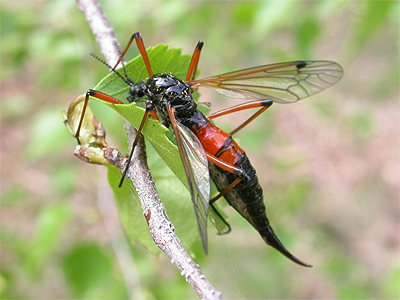 |
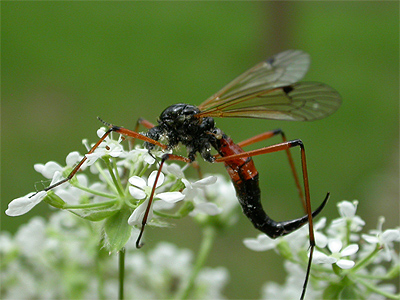 |
|
| ... | ||
| Dictenidia
bimaculata (Linnaeus, 1761) |
| Present
UK Status ... The NBN Atlas is
confusing, seperately giving records for both Ctenophora
bimaculata and Dictenidia bimaculata (Dictenidia
bimaculata was formerly Ctenophora
bimaculata) This
a species of ancient woodland, but not entrely confined
to this habitat. Records are widespread across much of
southern England and including Yorkshire. There are a few
records from Scotland and in southern Ireland. Dictenidia
bimaculata breeds
in the decaying wood of deciduous trees, including Birch,
Sallow and Oak. Present Nottinghamshire Status ... There are three historical records from C.J. Wainwright at Sherwood Forest near Edwinstowe in 1889, at South Leverton in 1900 and at Bunny 1913 (Ref: Carr, J.W. 1916. The Invertebrate Fauna of Nottinghamshire. Nottingham: J.& H. Bell Ltd) The only recent Nottinghamshire record we can trace from the information we have to hand, are of singles found at Sherwood Forest in 1960 (Ref: Natural England East Midlands 2005 ISR Data), and again at Sherwood Forest in June 2024 (Hibbert, T.), perhaps more frequently than the present number of records would suggest. |
|
| Nottinghamshire
distribution maps The following distribution maps are up to date as of January 2022 and only show the Nottinghamshire's recent records. |
|
| ... |
| Ctenophora ornata (Meigen, 1818) | Ctenophora pectinicornis (Linnaeus, 1758) | |
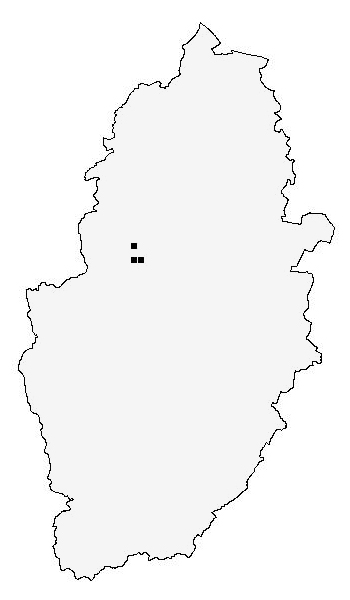 |
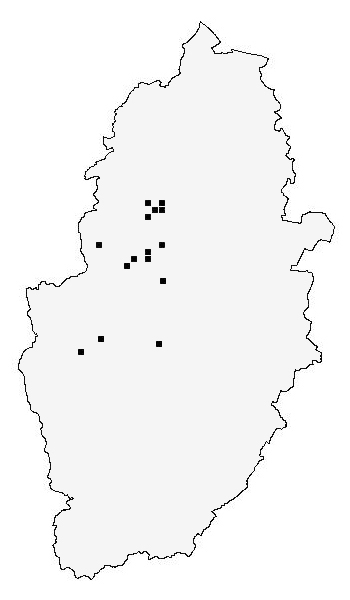 |
|
| The records for the Nottinghamshire distribution map are currently provided by the following contributors - Trevor and Dilys Pendleton. Sheila Wright and John Osborne. | The records for the Nottinghamshire distribution map are currently provided by the following contributors - Trevor and Dilys Pendleton. K N A Alexander (Invertebrate assemblage condition at Birklands and Bilhaugh SSSI and Birklands West and Ollerton Corner SSSI survey reports 2009-10). Trevor and Dilys Pendleton (Sherwood Forest Invertebrate Directory 2014). Stuart Warrington. The National Trust (Clumber Park invertebrate records). | |
| ...................................................................................................... | .................................................................................................. | |
| Tanyptera nigricornis (Meigen, 1818) | Dictenidia bimaculata (Linnaeus, 1761) | |
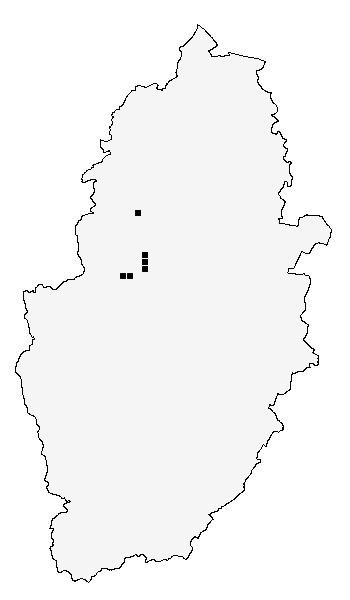 |
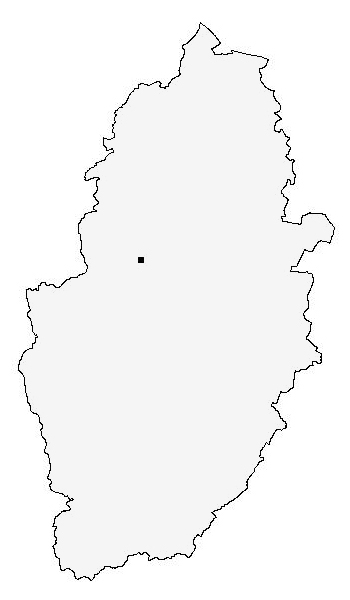 |
|
| The records for the Nottinghamshire distribution map are currently provided by the following contributors - Trevor and Dilys Pendleton. Stuart Warrington. The National Trust (Clumber Park invertebrate records). | The records for the Nottinghamshire distribution map are currently provided by the following contributors - Tom Hibbert. | |